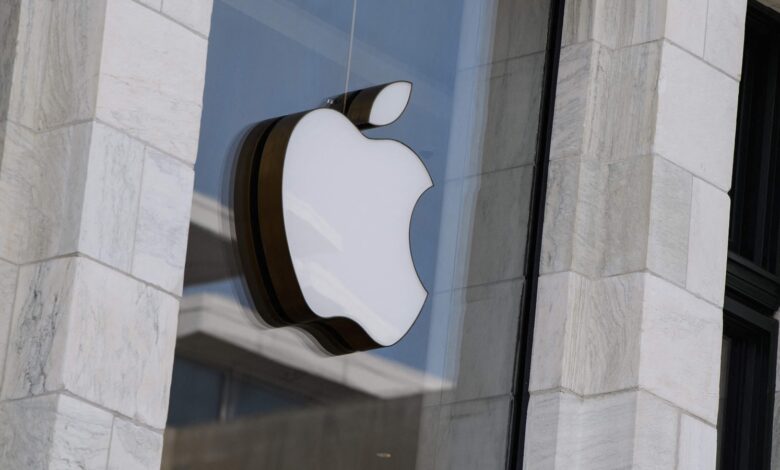Apple Could Soon Launch a Device With a Thin Robotic Arm: Here’s Everything We Know So Far

Apple Inc., looking for new revenue streams, is working on an expensive desktop home device that combines an iPad-like screen with robotic limbs.
The company now has a team of several hundred people working on the device, which uses a thin robotic arm to move around a large screen, according to people familiar with the matter. The product, which relies on actuators to tilt the screen up and down and make it rotate 360 degrees, would offer a twist on home products like Amazon.com Inc.’s Echo Show 10 and Meta Platforms Inc.’s discontinued Portal.
How Apple’s upcoming ‘robot’ device might work
The device is envisioned as a smart home command center, video conferencing device, and remote-controlled home security tool, said the people, who asked not to be named because the work is not public. The project — codenamed J595 — was approved by Apple’s executive team in 2022 but has begun to formally accelerate in recent months, they said.
Also read: Apple expands access to this useful iPhone feature to more developers with iOS 18.1: Details here
The shift to robots is part of a broader effort to boost sales and capitalize on Apple Intelligence, a suite of artificial intelligence technologies that will be available on iPhones, iPads and Macs this year. The company is also looking for new growth opportunities after ending its self-driving car efforts earlier this year.
A spokesman for Cupertino, California-based Apple declined to comment.
Apple’s industrial design team has been working on desktop robot concepts for years, but there was no consensus within the company—including the software engineering and marketing teams—on whether to proceed.
Apple’s marketing team worried that consumers wouldn’t want to pay for such a product. Meanwhile, top software engineering executives worried about the human resources needed to build the necessary software. But CEO Tim Cook was seen as a supporter of the device—as was John Ternus, the company’s head of hardware engineering.
According to these people, Apple has now decided to prioritize development of the device and is aiming for a launch as early as 2026 or 2027. The company is looking to bring the price down to around $1,000. But with years to go before the expected release, plans could theoretically change.
To show its support, Apple has put Kevin Lynch, a veteran executive, in sole charge of the project. He serves as vice president of technology and has overseen Apple’s self-driving cars and, until recently, its smartwatch and health software engineering efforts.
Lynch recently recruited key lieutenants who helped launch the Apple Watch to work on the desktop robot, as well as prominent robotics researchers and engineers. Lynch reports to John Giannandrea, Apple’s head of artificial intelligence.
The idea is that this desktop product will be primarily controlled by the Siri digital assistant and upcoming features in Apple Intelligence. The device could respond to commands like “look at me” by repositioning the screen to focus on the person saying those words—say, on a video call. It could also understand different voices and adjust its focus accordingly. Current prototypes are running a customized version of the iPad operating system.
The hardware engineering team is also involved. Matt Costello, the executive who led Apple’s HomePod smart speaker development, is overseeing the hardware for the project. The company is also working on robots that move around the home and has discussed the idea of a humanoid version. Those projects are being led in part by Hanns Wolfram Tappeiner, a robotics expert who now has about 100 former fleet engineers reporting to him.
In a job listing published this month, Apple said it has a team “working to leverage and build on groundbreaking research in machine learning robotics to enable the development of generalizable and reliable robotic systems.” The company said it is looking for professionals with experience in “robot control” and creating AI models to control robots.
Lynch has been tasked with some of Apple’s biggest projects, playing a key role in bringing the first Apple Watch to market in 2015 and being promoted in 2021 to oversee its car development efforts.
Under Lynch, the car project made progress—though the product’s ambitions also diminished over time. But by 2024, costs had ballooned to at least $10 billion and the auto industry was suffering from a slowdown. Concerns arose about Apple’s ability to stand out in a crowded field, and management decided to shut down the initiative in a rare and high-profile retreat.
The capabilities of the desktop device have also changed. Some people involved in the project said the features have been scaled back from the original ambitions, with one describing the development process as a roller coaster.
Others at Apple remain skeptical about whether the device will appeal to consumers and whether the company really needs another tablet-like product. While the new Vision Pro glasses combine virtual and augmented reality, they ultimately replicate the features of the iPad.
Apple has also struggled to break into the smart-home market. Its HomePod speaker has not sold as well as models from Amazon and Alphabet Inc.’s Google, and its Apple TV set-top box has lagged behind devices from Roku Inc. and other rivals.
The robotics effort is one of a few avenues Apple is pursuing to generate new revenue streams.
The company is also working on augmented reality glasses, as well as exploring less ambitious products like Meta’s Ray-Ban-like smart glasses. That product — which Meta describes as a hit — doesn’t offer a true AR experience but allows users to make phone calls and record video.
Additionally, Apple is looking to create a version of its AirPods headphones with cameras, allowing them to better sense the outside world. And it’s working on a giant foldable iPad—something that might not appear until 2027 or 2028 at the earliest, according to people familiar with the effort.
Apple still gets about half of its revenue from iPhones, which have been selling slowly in recent quarters. The company plans to launch new models in September with better cameras, processors and screens. But that is expected to generate only modest growth.
One more thing! We are now on WhatsApp Channel! Follow us there so you never miss any updates from the tech world. To follow HT Tech channel on WhatsApp, click This to join now!




